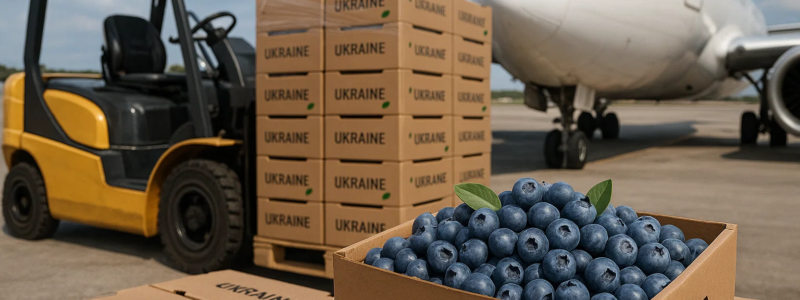
Ukrainian blueberry producers continue to actively develop exports, expanding the geography of supplies to countries in Southeast Europe. This was reported by the Union of Blueberry Producers and Exporters (SVEL) following its participation in the Fruit Attraction 2025 international exhibition, which took place in Madrid, according to Experts Club.
“Our union brings together five small and medium-sized companies that find it difficult to export on their own. Thanks to cooperation, we are able to supply fresh Ukrainian blueberries to European countries,” said Oleg Shishmarov, head of the UBE.
Despite the cool spring, which delayed the harvest season by two weeks, this year the union members managed to harvest over 350 tons of blueberries, of which approximately 250 tons were exported. The main destinations for deliveries were Serbia, Romania, and Moldova.
“The demand for Ukrainian blueberries is steadily growing. We are looking to expand exports to Western European countries, particularly Germany and Spain. During our season, Spain does not have its own blueberries, so local traders are actively buying Ukrainian berries,” Shishmarov explained.
According to FAO Stat and the World Blueberry Organization, the global blueberry market continues to grow by 6–8% annually. In 2024, global production exceeded 2 million tons, more than double the amount ten years ago.
The main producers are:
the United States — about 500,000 tons;
China — over 460,000 tons;
Peru — about 340,000 tons (one of the leaders in exports to the EU);
Chile — over 230,000 tons;
Canada — 150,000 tons;
Spain and Poland — leading suppliers to the domestic European market.
Ukraine is among the top 20 blueberry producers in the world, accounting for about 0.6% of global production. According to estimates by Experts Club analysts, in 2025, the area under blueberries in Ukraine exceeded 4,000 hectares, and exports tripled compared to 2021.
Experts expect that in the coming years, the Balkans — particularly Serbia, Romania, and Moldova — will remain Ukraine’s key partners in the regional berry market, while prospects for further expansion are opening up in Western European countries.